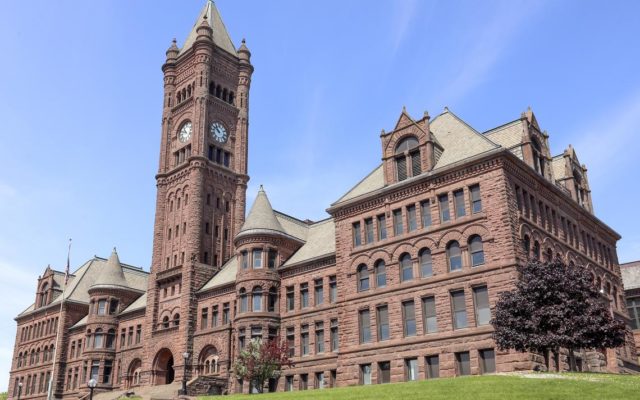What should be done with Historic Old Central High School?
Written By: Adelle Whitefoot | Nov 20th 2019
The Historic Old Central High School has a long list of needed repairs equaling about $48.5 million. Steve Kuchera /skuchera@duluthnews.com
Duluth school district CFO Cathy Erickson is working with staff over the next month or so to compile as much information as possible that can be presented to the School Board to help it make a decision if or when the time comes.
What should the Duluth school district do with Historic Old Central High School? That question has been on the minds of staff and the Duluth School Board for some time now, and maybe even more so since the building was given a $48.5 million price tag to fix and bring up to code.
Duluth school district CFO Cathy Erickson said she and staff will be working over the next month or so to compile as much information as possible that can be presented to the School Board if or when the board needs to make a decision about the iconic building.
In June, a facility assessment team of three outside companies presented to the board an estimate of what needed to be done to bring the building up to code and how much that would cost. The board was told it would cost about $24 million to fix the exterior, about $11 million for interior upgrades and repairs and another $13.5 million for system repairs and replacements, for a grand total of $48.5 million.
The board must decide what to do with the building within seven years. In that time, the building, currently heated with steam, would have to be converted off of steam as the district was told by the provider it would be cut off at that time. Recently, facilities manager David Spooner said he wasn’t sure if that was still the case. If the building didn’t have to be converted, the district would save a substantial amount of money.
Erickson said the district has two options: stay in Historic Old Central and fix it up or move everyone currently in the building and sell it. Those currently in the building include district administration, the Area Learning Center and Academic Excellence Online High School. A nonprofit, Companies to Classrooms, also occupies space in the building.
“If we had to vacate this space because the board decides they want someone to purchase the building, the district’s three options are purchasing an existing, leasing an existing or building new,” Erickson said.
The staff is working to collect data for the School Board, including square footage needed by the district if it were to leave Historic Old Central, estimates on funding required to move to a different location, what’s available that would fit the needs of the district and if there isn’t anything available and what adjustments would be needed to make it work, if possible.
“We are just trying to collect information and provide them with an overview and just to engage in a conversation on what does this look like to the board,” Erickson said. “I want them to be prepared if there is an offer that they feel comfortable taking. If they don’t have those pieces of information to consider, I think it makes it difficult to make a really good choice.”
Historic Old Central opened in 1892 and was modeled after the Allegheny County Courthouse in Pittsburgh. The Richardsonian Romanesque-style school was designed by Emmet S. Palmer and Lucien P. Hall.
The building served as a regular high school until 1971, and was placed on the National Register of Historic Places a year later. Even though the building is on the register, the district does not qualify for historic tax credits if it maintains the status quo, according to Natascha Wiener, a historic architect of the Minnesota State Historic Preservation Office.
“The historic tax program is focused on for-profit businesses and its primary qualifications are that it is for income-producing use, and generally speaking, school districts are not allowed to participate in the program,” Wiener said.
Wiener said there are building structures in which the district could hand over control of the building in which the tax credits might be usable to them, but that it’s done on a case-by-case basis that she couldn’t comment on.
If the district were to sell the building to a private developer, that developer could qualify for a federal and state tax credit as long as the building was income-producing — such as apartment or office rentals.
Erickson said she is hoping to be able to present all the information her and district staff can gather to the School Board at a committee of the whole meeting in the next couple of months.
“I hope this is just the beginning of a larger conversation and a step up on what more we can provide to make sure the board can make an informed choice should we have options put in front of us,” she said. “I think it’s important to be prepared.”
Source: What should be done with Historic Old Central High School? | Duluth News Tribune

